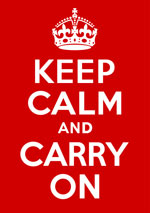Americas
APDS Blogger: Miles Knowles
Along the gradient of power, there’s a possible mix of “soft” and “hard” varieties. The public diplomacy originating at the U.S. State Department is commonly associated with the “soft” power of peaceful persuasion and cultural appeal; the foreign information efforts at the Pentagon are often in the service of some tangible “hard” power goal. The mixing often takes place in conflict zones, where a variety of forces and actors are in play. So who decides the mix, and how?
Written by: Gerard Lemos and Ali Fisher

We have been on the cusp of the network phase in Public Diplomacy for some time now, but as yet we have not fully crossed the threshold and adopted the operating model of a network based approach.
John Arquilla's recent article in Foreign Policy outlines the impact the changing operational environment is having on US military operations:
APDS Blogger: Peter Winter
Is Google bold? It takes some serious courage to stand up to the gatekeepers of the world’s biggest market. By refusing to kowtow to the Chinese censors, the tech company that built its fortunes on the free flow of information stood up for its business model, not to mention the ideals of its home country.
APDS Blogger: Alexis Haftvani

Keep Calm and Carry On. Keep Calm and Carry On. Keep CALM and CARRY On.
Maybe if I say it enough the phrase will sink deep into my subconscious thereby creating a vast reservoir of perseverance and tranquility. Maybe if I stare deeply into the large lettering and bold red hue my brain will find that elusive unwavering resolve and composure that typifies British culture.
I thought we elected a new president in 2008.
But Undersecretary of State for Public Diplomacy and Public Affairs Judith McHale proudly says she is “on the same page” as her predecessors Karen Hughes and James Glassman in defining a new public diplomacy strategy. She cites “consensus” among members of the undersecretary club.
Readers of this space know there’s been a recent flurry of public activity by those who set the course of U.S. communications efforts with foreign publics.







